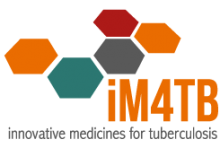Curing tuberculosis today
Currently, the World Health Organisation (WHO) recommends a “short-course” TB combination therapy
that includes a full 6 months treatment with rifampicin. The combination therapy often includes bulky
tablets and can cause severe nausea and other side effects.
The introduction of a powerful new drug that would allow the treatment duration to be shortened would
substantially diminish the risks of failure of treatment, relapse of the disease and increased prevalence
of drug-resistance bacteria associated with TB sufferers who fail to comply with the current therapy.
This new highly potent drug candidate for the treatment of tuberculosis – PBTZ 169 – has been discovered
by the ongoing collaboration between the Global Health Institute at EPFL (Swiss Federal Institute of
Technology, Lausanne – CH) and the A.N. Bach Institute for Biochemistry of the Russian Academy
of Science, Moscow.
The research and development underpinning PBTZ 169 is provided by More Medicines
for Tuberculosis (MM4TB) with support from the European Commission and
the Ecole Polytechnique Fédérale de Lausanne (EPFL).
However, due to a significant lack of funding, financial-philanthropic support as a bridge funding is sought
to demonstrate the efficacy of this new drug and to further attract public-private partnership in the future.
JOINT PUBLICATIONS (EPFL/CH – INBI/RU)
- V. Makarov et al., Towards a new combination therapy for tuberculosis with next generation benzothiazinones. EMBO molecular medicine, (Feb 5, 2014).
- J. Neres et al., Structural basis for benzothiazinone-mediated killing of Mycobacterium tuberculosis. Science translational medicine 4, 150ra121 (Sep 5, 2012).
- B. Lechartier et al., In vitro combination studies of Benzothiazinone lead compound BTZ043 against Mycobacterium tuberculosis. Antimicrobial agents and chemotherapy 56, 5790 (Nov, 2012).
- L. Vera-Cabrera, et al., In vitro activities of the new antitubercular agents PA-824 and BTZ043 against Nocardia brasiliensis. Antimicrobial agents and chemotherapy 56, 3984 (Jul, 2012).
- C. Trefzer et al., Benzothiazinones are suicide inhibitors of mycobacterial decaprenylphosphoryl-beta-D-ribofuranose 2′-oxidase DprE1. Journal of the American Chemical Society 134, 912 (Jan 18, 2012).
- C. Trefzer et al., Benzothiazinones: prodrugs that covalently modify the decaprenylphosphoryl-beta-D-ribose 2′-epimerase DprE1 of Mycobacterium tuberculosis. Journal of the American Chemical Society 132, 13663 (Oct 6, 2010).
- M. R. Pasca et al., Clinical isolates of Mycobacterium tuberculosis in four European hospitals are uniformly susceptible to benzothiazinones. Antimicrobial agents and chemotherapy 54, 1616 (Apr, 2010).
- G. Manina et al., Biological and structural characterization of the Mycobacterium smegmatis nitroreductase NfnB, and its role in benzothiazinone resistance. Molecular microbiology 77, 1172 (Sep, 2010).
- V. Makarov et al., Benzothiazinones kill Mycobacterium tuberculosis by blocking arabinan synthesis. Science 324, 801 (May 8, 2009).



